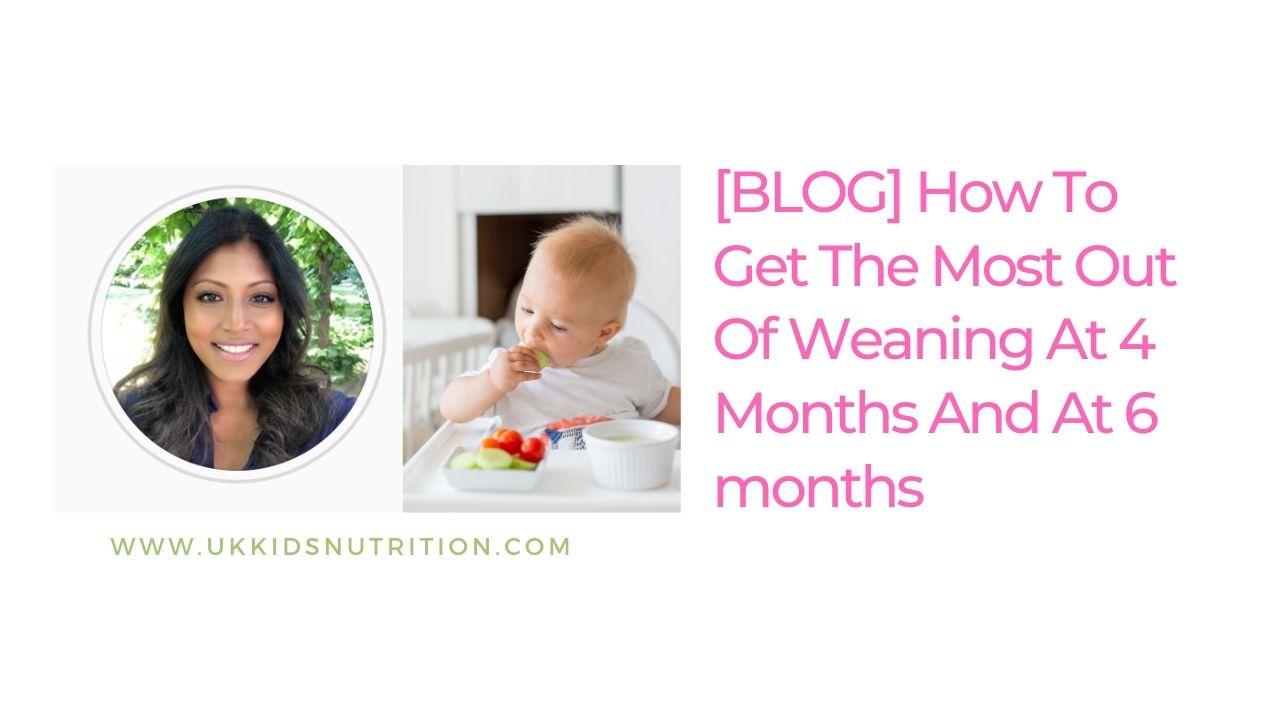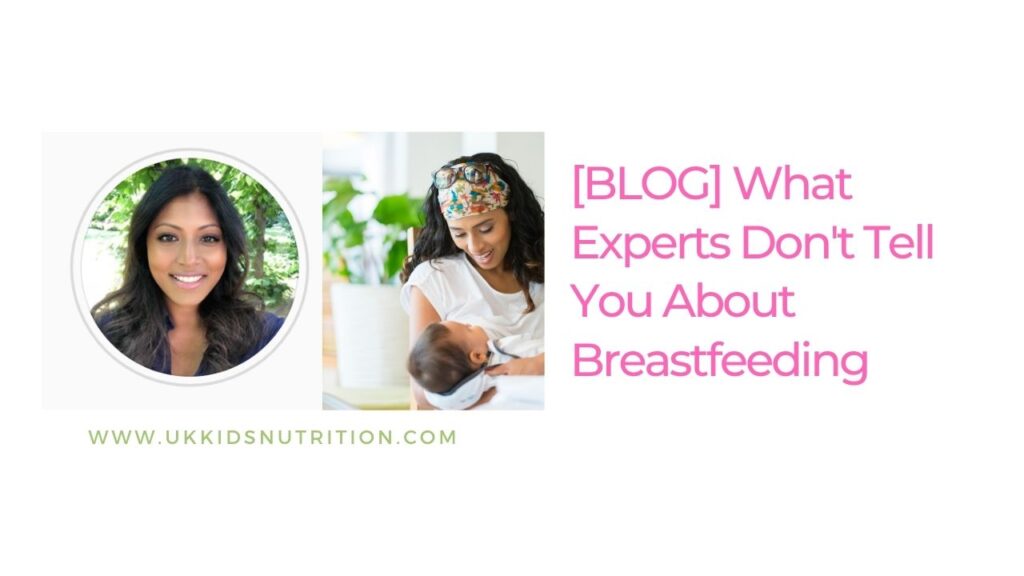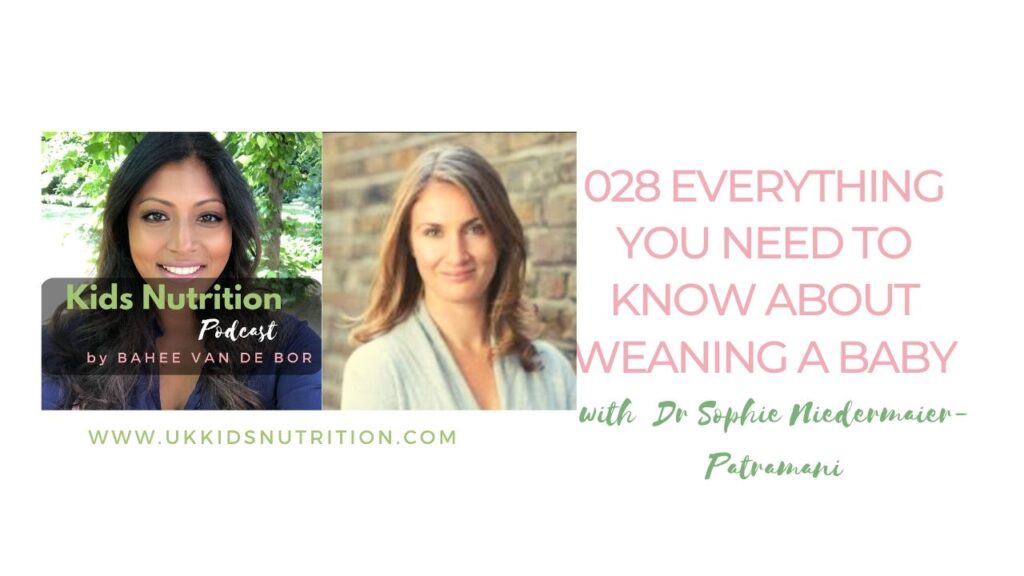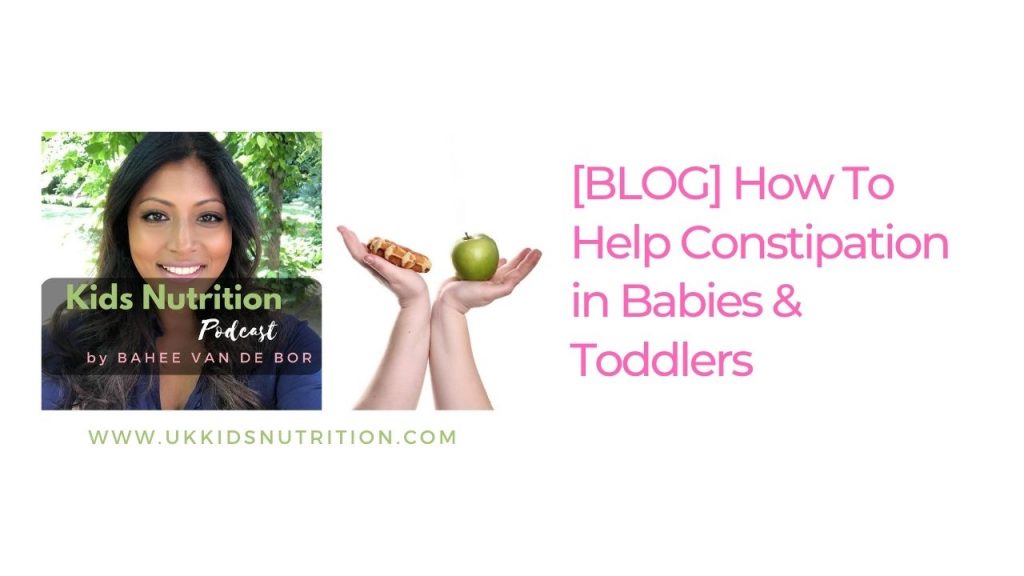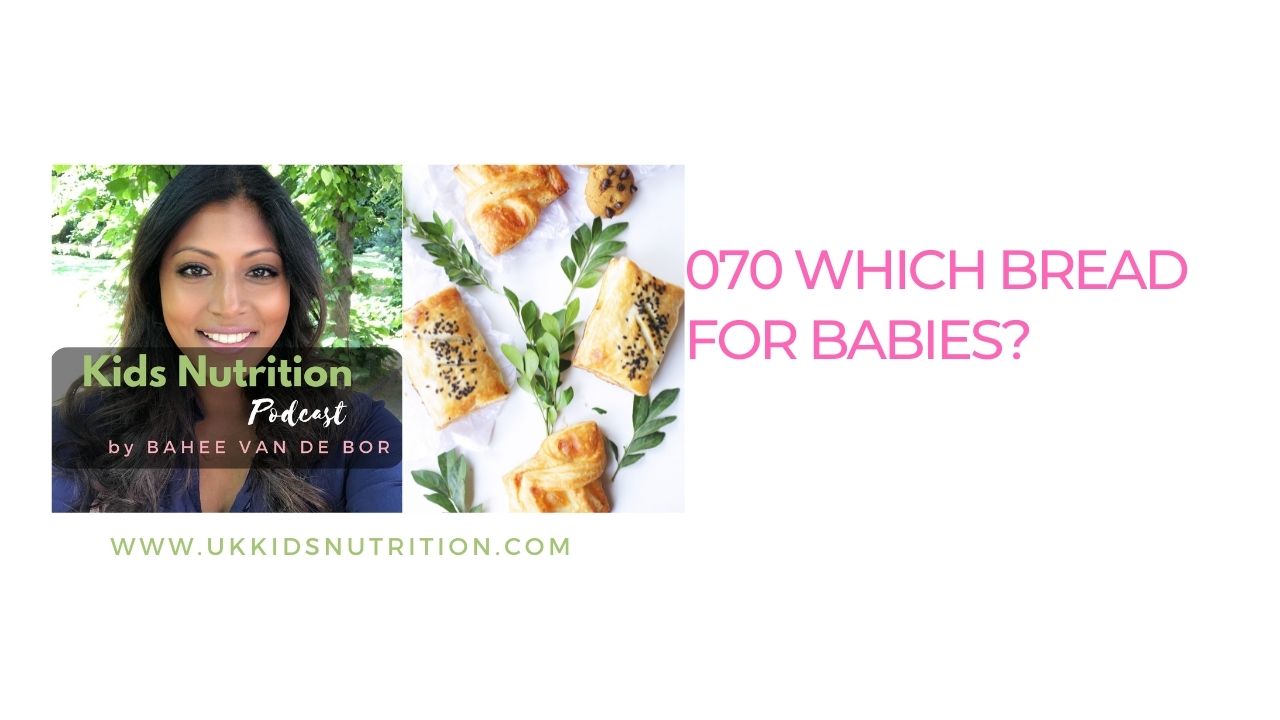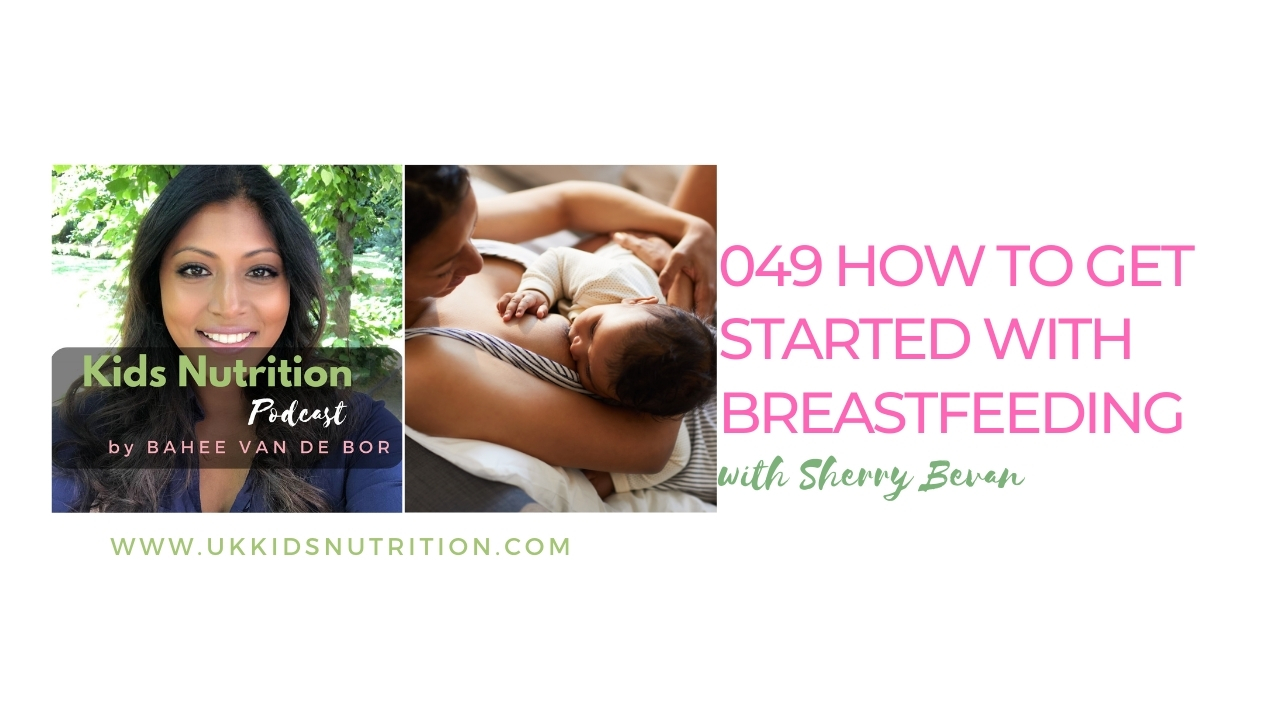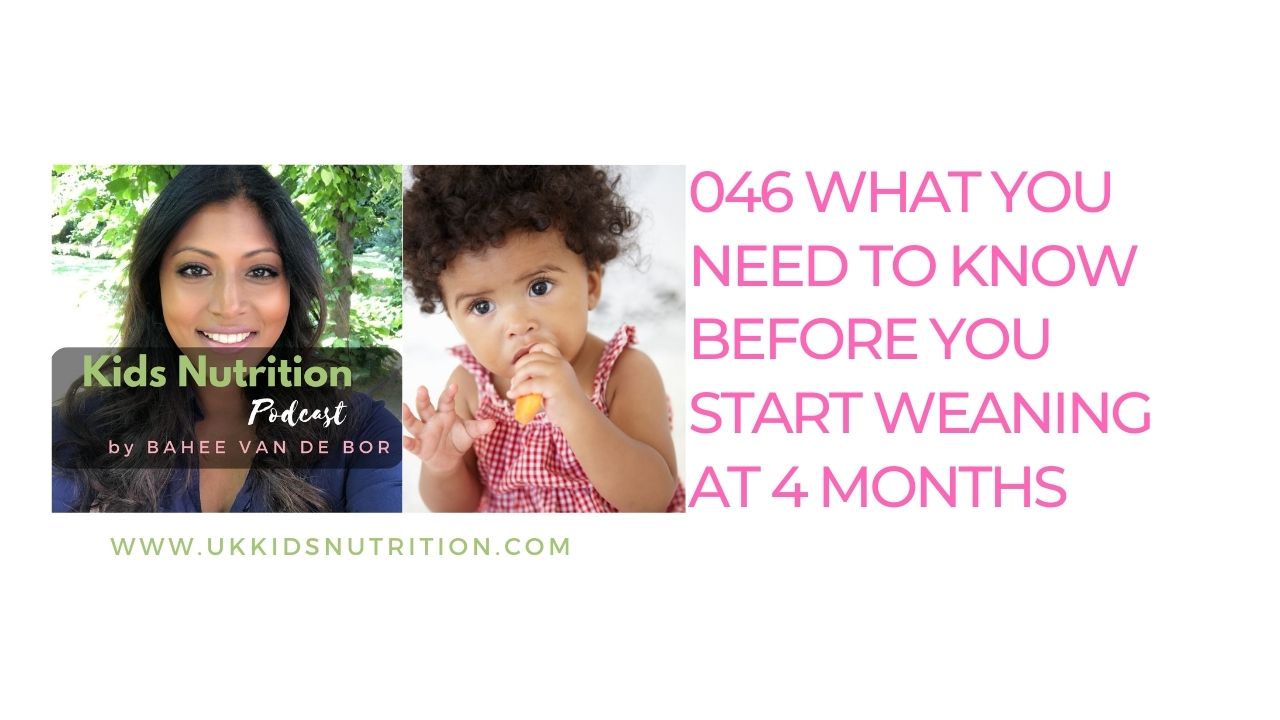Ah, the golden days of weaning…whether you plan to start weaning at 4 months or weaning at 6 months, let’s discuss how to get the most out of your baby’s weaning experience. If you were dismayed with the evidence on why delaying weaning until 6 months to start baby-led weaning beats traditional weaning at 4 months, let’s get familiar with the pros and cons of both weaning styles.
If your heart is set on weaning earlier at 4 months or even at 5 months, then I’ll cover the benefits of weaning for babies from 4 months, and guide you through the signs that your baby may be ready for starting solids. Having said that, if baby-led weaning is your preferred feeding style, then you really do have to wait until 6 months to start weaning. But here’s a secret, you can do both. Keep reading to find out how.
Weaning at 4 months
If you live in the UK, the Department of Health recommends delaying starting solids until 6 months of age. This may affect your decision to start weaning your baby at 4 months of age, but it doesn’t mean that it’s completely out of the question either.
You see the main reason for recommending weaning from around the 6 months mark is to encourage more women to breastfeed until at least baby is 6 months of age.
Benefits of breastfeeding
The main benefits of breastfeeding are that it can help develop your baby’s immune system, help them gain weight appropriately and reduce their risk of hospital admissions related to infectious illness. The most common childhood illness requiring hospital admissions include gastroenteritis and respiratory tract infections.
This is summarised in the SACN report (Report on feeding in the first year of life 2018). For example, the report shows that babies who were exclusively breastfed until 6 months avoided at least one or more hospital admissions related to gastrointestinal infections.
Mothers were also able to regain their pre-pregnancy weight more quickly as a result of breastfeeding.
So if you choose to start weaning at 4 months, make sure that you do this alongside breastfeeding. Avoid starting any earlier than 17 weeks as your baby’s digestive system simply won’t be ready for solid foods. Your baby’s chance of choking is also increased.
Bottle feeding with infant formula? No problem, the same advice applies. Just make sure that your baby is developmentally ready to start weaning at 4 months.
For further information on breastfeeding do refer to these free resources by the Department of Health and The Baby-Friendly Initiative.
Signs that your baby is ready for weaning
NHS England recommends looking out for the following signs to assess whether your baby is ready for solids:
- Your baby can stay in a sitting position and can hold their head steady
- Coordinate their eyes, hand and mouth, be able to look at food, pick it up and pop it in their mouth themselves
- Swallow food instead of spitting it out
Signs that are mistaken for a baby being ready for solids
- Chewing fists
- Waking in the night when baby had previously been sleeping through the night
- Wanting extra milk feeds
Unfortunately, starting solids is not guaranteed to help your baby sleep through the night.
One UK randomised clinical trial did show that the early introduction of solids between 4 and 6 months resulted in babies sleeping for 17 minutes longer.
But this is only one study and it’s hardly groundbreaking results if you are sleep deprived.
As the study results were based on mothers reporting the results, the commonly held belief that early introduction of solids will help babies sleep better at night may have also influenced the results.

Weaning at 4 months plan
Still, fed up and just want to start weaning? If your baby shows readiness for starting solids then follow the plan below.
Occasionally, if your baby has a food allergy, your baby’s allergy doctor or dietitian will recommend starting weaning with some of the foods that cause common allergies to reduce your baby’s risk of food allergies to these foods.
In this scenario, work with a paediatric dietitian for personalised advice on how to follow a special exclusion diet for tailored weaning guidance.
Remember that at 4 months, your baby won’t be ready for finger foods. Do make sure that if you are weaning at 4 months, the first tastes are from the ‘bitter’ group versus the sweeter-tasting fruits.
Traditionally, baby cereals were also chosen as the first baby-weaning food. Babies naturally gravitate towards sweet and salty flavours so it’s important to help them develop a palate for ‘bitter’, ‘sour’ and ‘umami’ flavours.
Weaning how to start
For weaning first foods, you can start with a root vegetable like carrots or greens such as broccoli, spinach, green beans or courgette.
When weaning the baby at 4 months, start with a thin puree that will easily fall off the baby spoon. You can puree with breastmilk or use leftover water from the pan that the vegetables were cooked in.
If you buy your baby puree, then select baby food marked as weaning stage 1. Select brands that focus on vegetables as the main ingredients.
Don’t be put off if your baby shows no reaction or completely rejects their first baby food during the first few weaning attempts. This is perfectly normal. You can offer the same food up to 10 to 12 times before your baby will start to accept it.
Research also suggests that the earlier that babies are offered bitter-tasting vegetables or the umami flavours of certain foods, the more likely that they will eat these foods as adults.
The reason why babies might initially refuse bitter and sour flavours during weaning is that it’s an innate response. Back in the day, this was nature’s way of protecting them from eating poisonous fruit.
These innate responses to bitter and sour foods can be modified by regularly offering a good variety of vegetables during the weaning period.
To protect your baby from respiratory and gastrointestinal infections, continue to breastfeed or give their usual amount of formula feeds. Remember that at this stage, babies will only be taking tastes of puree, so do offer the breast or bottle first. start with
How much baby weaning food to give?
In terms of quantity, your baby will only manage about ¼ to ½ a baby spoonful, to begin with.
As your baby becomes confident with solids, they may be able to manage an entire baby spoonful as he/she approaches 5 months and then the 6 months mark.
Try not to focus on the amount of puree eaten during this weaning period. Instead, focus on the variety of weaning foods so that your baby becomes confident with a variety of flavours (including bitter and sour flavours).
When planning your weaning schedule, remember that if you are starting weaning at 4 months, the majority of your nutrition and energy will be provided from either breastmilk or formula.
The weaning age will influence how much your baby will eat or how quickly they progress along the weaning stages. Remember that weaning is a journey so enjoy the process and, do let your baby guide you on the number of solids they eat.
The main focus when you first start weaning is to offer a good variety of weaning first foods. Your baby’s job is to decide how much of the offered foods to eat.

Can I start weaning at 5 months?
Babies may start to show some signs of readiness for solids at 5 months. If you are breastfeeding, continue with this until your baby shows all the signs of readiness.
Remember, the benefits of delaying starting solids until 6 months include the reduced risk of hospital admissions related to gastrointestinal and respiratory infections.
Despite this, if you feel that your baby is ready to start weaning at 5 months of age, then start with vegetable puree followed by fruit as per the weaning advice above.
Similar to starting weaning at 4 months, you would follow the exact same weaning guide and use the same first foods.
The most common weaning mistake that parents make is to focus on the amount of weaning solids that the baby will take. Instead, focus on the variety of tastes and expose your baby to as many of vegetables as possible.
During the first few months of weaning, research shows that babies are more likely to accept new foods with fewer exposures than at later ages, therefore use this weaning period to expose your baby to as many different foods as possible.
Weaning at 6 months
Six months is the official age to start weaning your baby.
There is no “critical window” to start weaning. Your baby will not be disadvantaged in any way if you choose to delay weaning until 6 months of age.
The choice of feeding style however is important. You can of course start with the traditional method of spoon feeding. And if you do, you can offer vegetables as the first food followed by fruit as above.
However, you can choose to start weaning with soft vegetables, instead of very smooth puree. This helps your baby become confident with a variety of textures as quickly as possible.
As your baby also becomes familiar with solid foods, you can gradually increase the amount of foods offered or start a second meal during the day.
During weaning, continue to offer breast milk or your baby’s formula. Your baby will gradually start to drink a little bit less as they increase the portion of solid foods that they eat.
Your baby’s chewing skills will also develop between 6 months and 10 months so you can start to offer finger foods from 6 months. This means that you can swiftly move from smooth puree to lumpy textures very quickly.
To learn about introducing bread to babies see Which Bread For Babies?
For a four-week step-by-step weaning schedule and guide, you can buy the Masterclass: Let’s Nail Weaning.
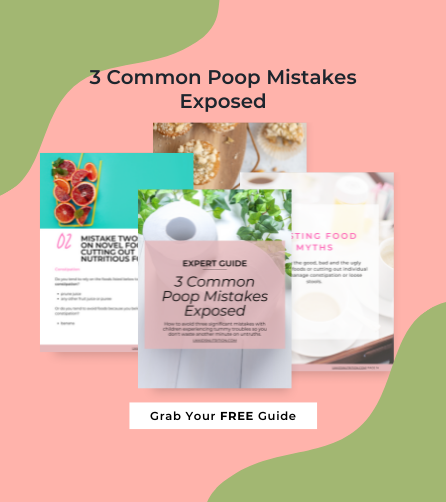
Baby-led weaning or spoon-feeding?
One of the main advantages of baby-led weaning is that your baby will be in control of their intake. This helps them to adapt their intake according to their own internal satiety cues.
The main downside with spoon feeding is that as a parent, you are in much more control and may end up encouraging your baby to eat an amount that you feel is appropriate, rather than what your baby thinks is enough.
With baby-led weaning, your baby will have a better chance of regulating their energy intake by listening to how much their body needs.
This study published in Maternal and Child Nutrition in 2020 showed that if you choose formula feeding and then spoon feeding, this combination of feeding may increase your baby’s risk of gaining more weight.
In contrast, if you are currently breastfeeding, then the research suggests that there is no expected difference in the rate of weight gain, even if you choose to follow the traditional feeding method of spoon-feeding.
This is because breastfeeding helps your baby learn to feed intuitively and to set their own pace for feeds.
This is reassuring because regardless of whether you choose spoon feeding or baby-led weaning, your baby will continue to grow at their expected rate of growth.
With bottle feeding, there is a concern that babies are encouraged to finish their bottles. So they lose their ability to self-regulate intake according to their appetite.
For this reason, in formula-fed babies, baby-led weaning may help babies reestablish and regulate their intake according to their own appetite.
Cons of baby-led weaning
One of the main benefits of baby-led weaning is that babies are offered family foods from the start of the weaning period. This means that babies are exposed to a variety of textures and flavours from 6 months of age.
The downside is that with the popularity of baby-led weaning and incorrect weaning advice shared online, babies are offered more protein-rich foods or foods high in fat, salt and sugar.
Protein foods such as meat and chicken are advantageous as weaning foods as it is rich in iron. Your baby’s iron stores start to diminish from 6 months and breast milk alone is no longer sufficient to meet their growing and increasing needs.
However, research studies such as the European Childhood Obesity Project showed that babies who drank formula with higher protein content (per 100ml) gained weight more rapidly compared to infants in the low-protein group.
Because length at 2 years in these babies did not differ between the groups, the authors concluded that the difference in weight gain in the higher protein group was body fat.
For this reason, continue to focus on offering a good variety of soft vegetables, fruit, and bread with some protein foods such as eggs, fish, chicken and meat when first starting to wean.
Avoid focusing on high-protein foods. Instead, as with spoon-feeding, aim to start weaning with a variety of vegetables, moving onto fruit, grains, lentils and legumes or eggs, fish, meat and chicken for iron.
To reduce fussy eating it’s a good idea to offer both wet and dry textures so that your baby is familiar with and comfortable with them.
The well-known New Zealand study that studied baby-led introduction to solids BLISS, showed that at 12 months of age, parents who adopted baby-led weaning rated their babies as significantly less fussy and picky about food.
Meals such as porridge for breakfast or foods with a wet sauce may need to be offered using a spoon. However, you can encourage your baby to hold the spoon and guide this to their mouth.
Alternatively, you can also offer foods such as spaghetti or pasta in a wet tomato sauce so that your baby is fully on board with these textures.
They may use their hands to self-feed, but this will ultimately help reduce fussy or picky eating further down the line.
Is your baby or child getting enough vitamin D?
Click Here To Read
What about foods that cause common food allergies?
There is no need to avoid foods that cause the most common food allergies. So foods such as eggs, fish, gluten/wheat or nuts can be offered as part of the weaning journey from 6 months of age.
As your baby’s kidneys are still developing, it’s important to avoid foods that contain added salt.
As your baby will be joining in family foods as part of baby-led weaning, family meals will need to be temporarily free from added sugar and salt.
When offering nuts like peanuts, you can use peanut butter, thinned with a little breast milk or water.
Alternatively, peanut snacks called ‘Bamba’ are available for babies as weaning foods. Note that this can unfortunately be high in salt.
Which foods should not be given
- Cows’ milk as a main drink (can cause small blood loss as a result of some intestinal bleeding when offered from 6 months as their main drink. It is also low in available iron and other important nutrients)
- Honey (risk of infant botulism)
- Foods with added salt
- Foods with added sugar (including many commercially available baby rusks)
The bottom line
The official recommendations are to breastfeed exclusively until 6 months and then to start weaning at 6 months. Some babies will become developmentally ready for solids a little earlier. You can start tastes of solids and therefore weaning from 4 months of age, but just make sure that weaning foods are appropriate for your baby.
There is some evidence that baby-led weaning may protect formula-fed babies from rapid weight gain. Baby-led weaning may also help your baby to self-regulate and to develop a more positive relationship with food.
However, as with spoon-feeding, weaning foods at 4 months or at 6 months should initially include a wide range of vegetables, then fruit, grains and iron-rich foods to help meet your baby’s growth and development.
Let Me Help
Would you like to meet a children’s dietitian who has successfully helped families solve their nutrition problems from around the world?
No matter what you are worried about, I’ll help you manage these with confidence.
Are you a food brand?
Book a business development call with me here to discuss how a paediatric dietitian like me can help elevate your brand.
